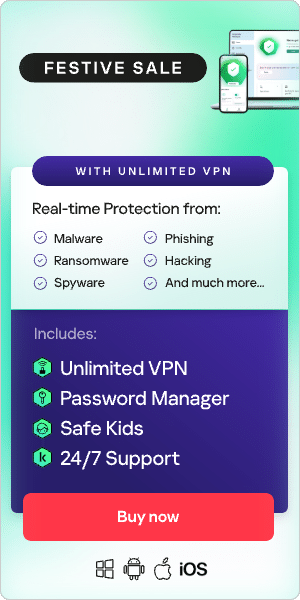
More companies around the world are undergoing digital transformations, which means that more data is stored and accessed electronically than ever before. Against this backdrop, Zero Trust has proven itself to be a powerful framework capable of addressing the many challenges associated with cloud or hybrid environments and remote employees. Read on to find out more about how organizations can use the Zero Trust security model to reduce vulnerabilities, ward off threats, and control data use and access amongst employees.
What is Zero Trust?
Zero Trust redefines processes to assume that every user is untrustworthy at the start of every interaction. In doing so, systems automatically authenticate and check authorizations for a user before they are granted access to any application, database, or business asset. Additionally, each user's authorization status is continuously validated while using apps and data.
As more businesses and governments operate within cloud and hybrid environments, the need for the Zero Trust framework is rising. These environments make it increasingly difficult for companies to determine who and what should be trusted with access to networks and applications. That's why implementing architecture and strategy that doesn't need to assume user trust is becoming commonplace.
An important focal point is the user workflow and ease of use. When it comes to performance concerns, the right framework means all validations processes take place rapidly in the background, minimizing interruption to the user while greatly strengthening business security.
The term Zero Trust security model is sometimes used interchangeably with similar or related terms such as Zero Trust architecture, Zero Trust network architecture, Zero Trust network access, or perimeterless security.
How does Zero Trust work?
The Zero Trust security model is founded on a series of key principles, which are designed to reliably identify users and their intent. Zero Trust principles include:
Attackers are everywhere
By assuming that hackers exist both inside and outside the network, it follows that no machines or users can be trusted by default.
Endpoints are untrusted
If a device has adequate security controls, then endpoint management will validate these. Endpoint security should extend to the authenticator as well to make sure only approved devices are used and private key material is properly secured.
Users should receive least-privilege access
By giving users only the access they need, you minimize exposure between users and sensitive parts of the network. This is contrary to ‘trust everyone inside’ or ‘trust-but-verify’ approaches.
Use micro-segmentation to maintain security
Micro-segmentation involves breaking security parameters into smaller regions on separate parts of the network, based on data classification, with separate access. This ensures that users cannot access different zones without further authentication.
Access control minimizes the network attack surface
By placing strict controls on user access and device access, an organization minimizes the network attack surface. It’s important to monitor how devices access the network to ensure each one is authorized. Access control should protect key systems by providing the least privilege required to fulfil a task.
Multi-factor authentication or MFA is essential
Users are validated through strong authentication measures before access is granted. Two-factor authentication (2FA) is considered weaker than MFA and can undermine Zero Trust by erroneously authenticating users.
Strong authentication requires three key elements
One, it should not rely solely on shared secrets or symmetric keys, such as codes, passwords, and recovery questions. Two, it should use hardware to repel credential phishing and impersonation. And three, it should be scalable and easy to use. Not everything labelled multi-factor authentication necessarily fulfils these three criteria.

How is Zero Trust implemented?
A Zero Trust framework helps businesses operate securely and effectively, even when users and data are dispersed across various locations and environments. However, there is no one-size-fits-all approach to implementing the framework, so most businesses will begin planning the adoption process by breaking it down into three primary stages.
1. Visualize the organization
The first approach to establishing a Zero Trust security model is for an organization to visualize all its components and how they connect. This requires a thorough evaluation of the organization's resources and how they are accessed, along with their risks. For instance, a database containing private customer data may need to be accessed by the financial department, and vulnerabilities with that connection impose inherent risks.
This visualization and evaluation process should be ongoing as an organization's resources, and the need to access those resources, will continuously evolve as the organization grows. Likewise, the importance and risk associated with these components will also change. Therefore, organizations planning to implement a Zero Trust network should start with what they presume will be most important and the most vulnerable as the adoption of the framework begins.
2. Mitigate risks and concerns
Since potential vulnerabilities, along with all conceivable threats that could exploit them and the paths an attacker could take, were identified in the previous stage, the mitigation phase addresses those concerns in order of priority.
During this phase, an organization will establish processes and tools that will help automatically detect new vulnerabilities and threats. There should also be processes that automatically stop threats or, when that is not possible, mitigate the impact of the likely outcome (for example, by limiting the data that will be exposed) as much as possible.
3. Optimize execution
During the third stage of implementing the Zero Trust framework, organizations will work to extend their processes and protocols to include all aspects of IT. The speed of this rollout will be entirely dependent on the organization's complexity and the resources they invest into the implementation process.
What matters most is that as the framework rolls out to cover more aspects of the organization's infrastructure, it is routinely tested to ensure efficacy and usability. Organizations that do not properly prioritize the user experience when implementing security frameworks like Zero Trust will end up facing non-compliance and reduced productivity at scale.
Benefits of Zero Trust
A Zero Trust framework heightens security for organizations undergoing digital transformation and helps to future-proof organizations that intend to adopt and remain in the cloud. This makes Zero Trust particularly relevant for software as a service (SaaS) companies, as well as growing businesses across industries. It is especially beneficial for organizations which need to accommodate remote workers or maintain a multi-cloud environment. Key benefits include:
Effective access control
Through a combination of endpoint security, identity verification, least privilege controls, micro-segmentation, and other preventative techniques, Zero Trust deters attackers and limits their access to applications, data, and networks. This makes it one of the most effective means of organizational access control.
Borderless strategy
With the rise in remote working around the world, the number of endpoints within a network grows and infrastructure expands to include cloud-based servers and applications. This makes the task of monitoring and maintaining a secure perimeter more challenging. A Zero Trust approach meets this challenge by accommodating any number of devices and users with equally robust security.
Greater insight
A cloud-based Zero Trust model can increase visibility into network traffic, as vendors monitor, manage, troubleshoot, patch and upgrade infrastructure. The model should include insight into endpoint security hygiene and authenticators.
Reduced risk
A Zero Trust model reduces an organization’s attack surface by restricting user access and segmenting the network. Consequently, the model reduces the time taken to detect breaches, which helps organizations minimize damage and reduce data loss.
A more efficient user experience
Zero Trust can enhance user experience since access policies and risk assessments can eliminate the need to re-authenticate throughout the day. Mechanisms such as Single Sign-On (SSO) and strong MFA reduce the need to remember complex passwords.
Regulatory compliance
The Zero Trust framework supports compliance with various internal and external regulations. By shielding every user, resource, and workload, the Zero Trust framework simplifies the auditing process and makes complying with PCI DSS, NIST 800-207, and other standards much easier.
Zero Trust use cases
In today’s environment, any organization can benefit from a Zero Trust security model. However, example use cases include organizations whose infrastructure includes:
- A hybrid or remote workforce
- Legacy systems
- Unmanaged devices
- SaaS apps
Key threats that Zero Trust aims to overcome include:
- Insider threats
- Supply chain attacks
- Ransomware
Zero Trust is relevant for organizations which face:
- Industry or other regulatory requirements
- Concern in retaining cyber insurance
- The need to consider user experience, especially in relation to MFA
- Challenges with attracting and retaining sufficient cybersecurity expertise, given the worldwide skills shortage
Every organization faces unique challenges depending on its industry sector, geographical focus, stage of digital transformation, and current security strategy. However, Zero Trust can typically be adjusted to meet a particular organization’s requirements.
Zero Trust and cyber resilience
The shift towards hybrid working, plus the increased volume and complexity of cyber threats, means that cyber resilience is paramount for organizations. Cyber resilience involves a shift in emphasis from preventing cyber attacks to accepting their inevitability in today’s world – but ensuring that the organization is as prepared as possible and can respond and recover quickly and effectively. Zero Trust plays a key role in increasing cyber resilience.
One of the barriers to Zero Trust implementation is the number of siloed data-centric tool sets that many organizations grapple with. The hybrid workplace has caused security teams to deploy new endpoint solutions, adding to an existing array of data protection tools. This volume of tools – each applying rules and analytics where sensitive data intersects with users, applications, and devices – can cause problems for Zero Trust. This is because they interrupt the flow of data, reduce visibility, and increase the risk of policy misconfigurations.
The solution is to consolidate data-centric process into a Data Security Platform (DSP). A platform facilitates greater control by using a centralized policy engine that spans all data-centric processes. Integrating processes and ensuring continuity removes siloes, enhancing data visibility and making tracking more consistent. In turn, this allows for greater automation, simplified operations, and more transparency for users.
A good Data Security Platform should unify data discovery, classification, control, and minimize data loss and obfuscation. And it should enable an infrastructure that makes it easier for security teams to implement Zero Trust across an organization’s hybrid workplace.
FAQs about Zero Trust security
Frequently asked questions about Zero Trust include:
What are the principles of Zero Trust security?
The foundational principle of Zero Trust is “never trust, always verify”. Zero trust architecture enforces access policies based on context—such as the user's job role and location, what device they are using, and what data they are requesting—to prevent inappropriate access. Zero Trust is designed to protect modern environments and enable digital transformation by using strong authentication methods, network segmentation, preventing lateral movement, and ensuring least access policies.
What are the top benefits of a Zero Trust model?
The greatest advantage of the Zero Trust model is that it helps to reduce business risk. This is because applications and data remain inaccessible and unexposed until a user is authenticated and authorized to interact with them. In turn, this improves access control as it encourages organizations to rethink how access is granted and tighten control over how long authorization lasts for a given use case. Overall, the benefits of Zero Trust greatly outweigh the initial challenges associated with implementing it.
How can you apply Zero Trust?
When designing a Zero Trust architecture, security teams typically focus on answering two questions. These are: What are you trying to protect, and from whom are you trying to protect it? The answers to these questions will determine how security teams apply Zero Trust. Many organizations implement Zero Trust using a phased approach, starting either with the most critical assets or else testing non-critical assets, before rolling out Zero Trust more broadly across the network.
Recommended products
- Kaspersky Hybrid Cloud Security
- Kaspersky Managed Detection and Response
- Kaspersky Threat Intelligence
Further reading





